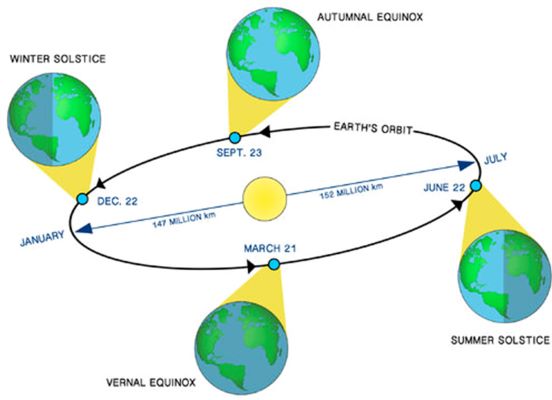Hello, Meteorological Autumn!
2021-09-08 07:01:22.000 – Jackie Bellefontaine, Weather Observer
A big warm welcome to my favorite season, autumn! You may be thinking, “Wait? September only just started!” well, this past Wednesday (September 1st) marked the start of what is known as meteorological autumn. Meteorological autumn differs from what is considered the start of autumn on the calendar called astronomical autumn. This applies to the other seasons as well. So, what is the difference between meteorological and astronomical seasons?
Earth’s rotation around the sun forms the astronomical calendar, punctuated with significant points in rotation that define the changes between different seasons. These points are known as the equinoxes and solstices. Earth’s tilt as well as the sun’s alignment over the equator determine the two equinoxes and two solstices. The equinoxes occur at the times when the sun passes directly over the equator, around March 21st (vernal equinox) and September 22nd (autumnal equinox) in the Northern Hemisphere. Solstices are the points when the sun appears to reach its highest or lowest point in the sky for the year, around December 22nd (winter solstice) and June 21st (summer solstice) in the Northern Hemisphere. In the Southern Hemisphere, the seasons are reversed by still begin on the same dates. However, the time it takes the Earth to complete its rotation around the sun and its elliptical orbit causes the exact dates of the equinoxes and solstices to vary. The Earth actually takes 365.24 days to travel the sun, therefore an extra day is needed every four years, creating the Leap Year. Additionally, the elliptical shape of Earth’s orbit around the sun can cause the lengths of the seasons to change as well. The variations in the durations and start of the seasons creates a challenge when trying to compare climatological statistics for a particular season across years. Thus, meteorological seasons came to be!

Schematic of Earth’s rotation showing the equinoxes and solstices
Meteorological seasons are the seasons broken down into four groupings of three months, grouping is based on the annual temperature cycle as well as our calendar year. Summer is considered to be the warmest part of the year, winter the coldest, autumn and spring the transitional periods. Thus, meteorological summer is considered to be June, July, August; meteorological winter includes December, January, February; meteorological spring includes March, April, May; and meteorological autumn includes September, October and November.
So, if someone now tells you it’s too early to start decorating for autumn, just keep putting out your pumpkins and inform them “Actually, its meteorological autumn!”.
Jackie Bellefontaine, Weather Observer
Team Flags Return for Seek the Peak’s 25th Anniversary
Team Flags Return for Seek the Peak's 25th Anniversary By MWOBS Staff Mount Washington Observatory is looking forward to continuing a much-loved tradition for Seek the Peak’s 25th Anniversary: Team flags. In inviting teams
Meet Summer Interns Zakiya, Max and Maddie
Meet Summer Interns Zakiya, Max and Maddie By MWOBS Staff We are excited to welcome six teammates to the summit of Mount Washington this summer! During their internship, these students and graduates will play
Saying Goodbye to the Summit
Saying Goodbye to the Summit By Alexis George After an extraordinary last three years working as a Weather Observer and Meteorologist, I am excited to pursue a different career. As sad I as am




